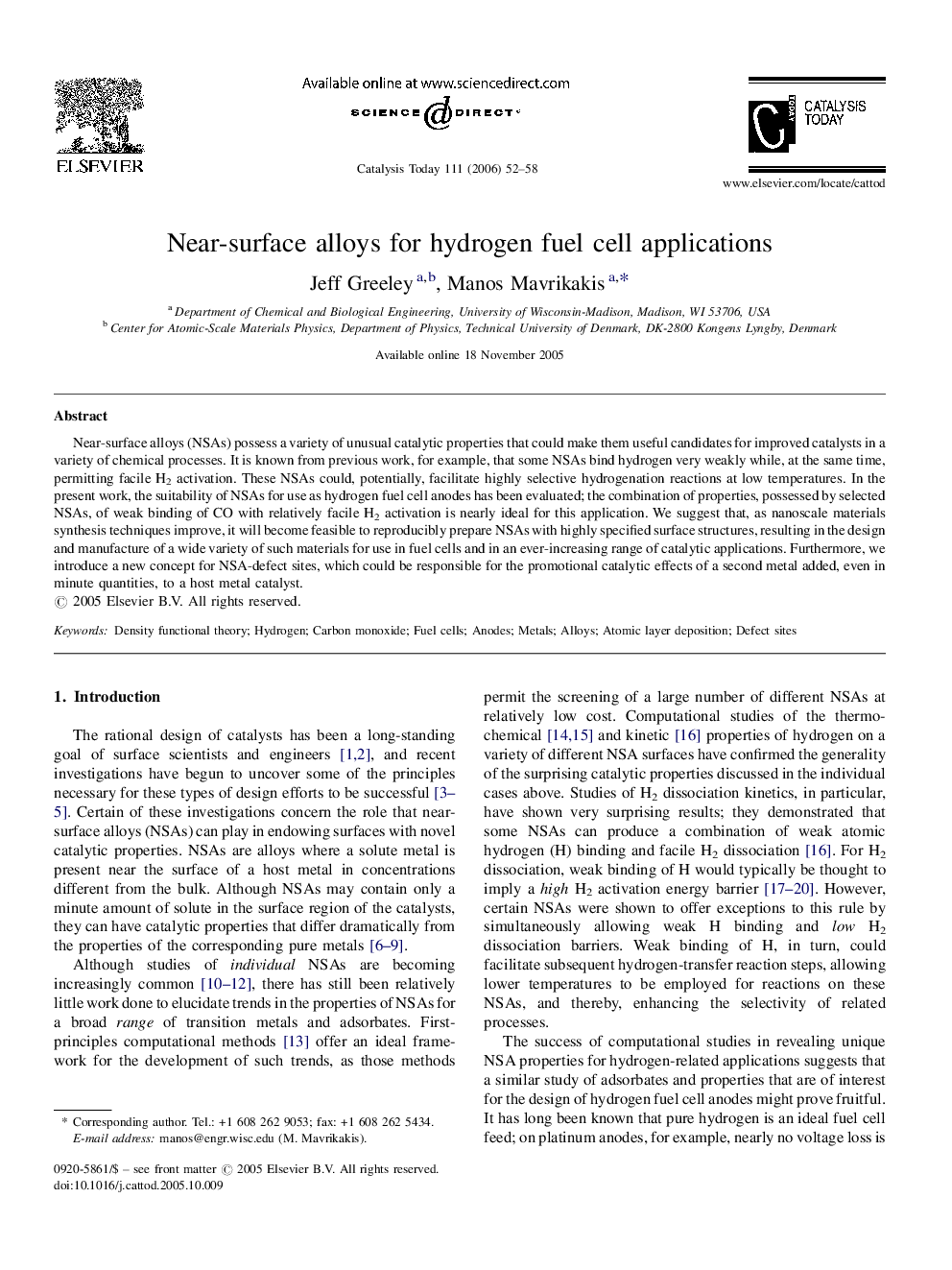| Article ID | Journal | Published Year | Pages | File Type |
|---|---|---|---|---|
| 58358 | Catalysis Today | 2006 | 7 Pages |
Near-surface alloys (NSAs) possess a variety of unusual catalytic properties that could make them useful candidates for improved catalysts in a variety of chemical processes. It is known from previous work, for example, that some NSAs bind hydrogen very weakly while, at the same time, permitting facile H2 activation. These NSAs could, potentially, facilitate highly selective hydrogenation reactions at low temperatures. In the present work, the suitability of NSAs for use as hydrogen fuel cell anodes has been evaluated; the combination of properties, possessed by selected NSAs, of weak binding of CO with relatively facile H2 activation is nearly ideal for this application. We suggest that, as nanoscale materials synthesis techniques improve, it will become feasible to reproducibly prepare NSAs with highly specified surface structures, resulting in the design and manufacture of a wide variety of such materials for use in fuel cells and in an ever-increasing range of catalytic applications. Furthermore, we introduce a new concept for NSA-defect sites, which could be responsible for the promotional catalytic effects of a second metal added, even in minute quantities, to a host metal catalyst.
